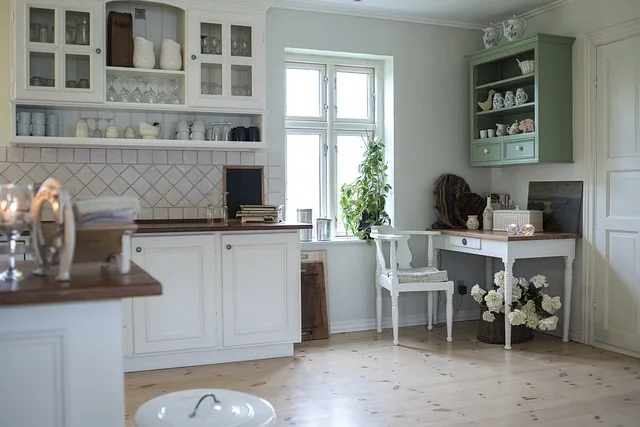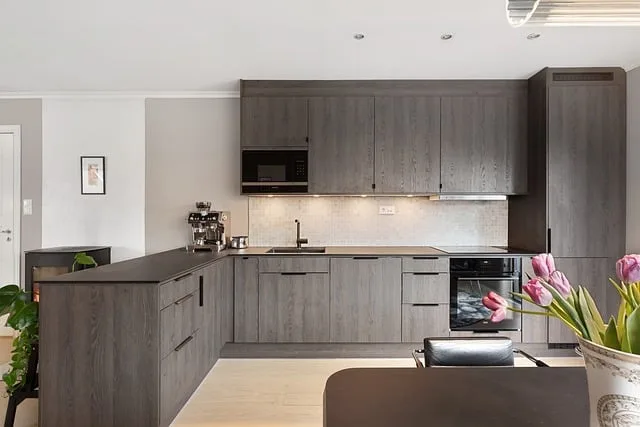Imagine this: you’ve just laid down beautiful, shiny tiles that catch the light just right. Now, you’re ready to install your cabinets. The big debate is whether to place those cabinets directly on top of the tile or to install them first and tile around them. So, what’s the scoop?
Placing cabinets on top of tile can be a smart move. It creates a seamless look, making your kitchen feel more cohesive. Plus, if you ever decide to change your flooring, you won’t have to worry about the cabinets being in the way. It’s like having a solid foundation for a house; everything else just fits better on top.
On the flip side, some folks prefer to install cabinets first. This method allows for easier adjustments and can save you a few bucks on tile since you won’t need to cover the area under the cabinets. Think of it as building a puzzle; sometimes, it’s easier to fit the pieces together when you start with the big ones.
The Great Debate: Should Kitchen Cabinets Be Installed Over Tile?
On one hand, installing cabinets over tile can create a seamless look. Imagine walking into your kitchen and seeing those cabinets sitting pretty, perfectly aligned with the tile below. It can give your space a polished, cohesive vibe. Plus, if you ever decide to change your flooring, you won’t have to worry about the hassle of removing cabinets first. It’s like having your cake and eating it too!
But wait—there’s another side to this debate. Some argue that installing cabinets over tile can lead to stability issues. Think about it: tiles can crack or shift over time, and if your cabinets are resting on them, you might end up with a wobbly situation. It’s like building a house on sand; eventually, it’s going to sink.
Then there’s the cleaning aspect. If you install cabinets over tile, you might find it tricky to clean underneath them. Dust bunnies and crumbs could become your new kitchen companions, lurking in the shadows. Who wants that?
So, whether you’re team “over tile” or team “under tile,” it’s essential to weigh the pros and cons. After all, your kitchen is the heart of your home, and you want it to be both functional and fabulous!
Tile First or Cabinets First? Unpacking the Kitchen Design Dilemma

Imagine you’re standing in your dream kitchen, the aroma of fresh coffee wafting through the air. You glance around and notice the stunning tile backsplash shimmering in the light. But wait—did you install that tile before or after the cabinets? Here’s the scoop: if you lay the tile first, you get a seamless look that can make your space feel larger and more cohesive. Plus, it’s easier to clean those pesky grout lines without cabinets in the way.
On the flip side, installing cabinets first can save you a headache. Think about it: cabinets are heavy and can easily chip or crack your beautiful tiles if you’re not careful. By putting the cabinets in first, you can avoid the risk of damaging your new flooring. It’s like putting on a pair of shoes before stepping into a muddy field—you want to protect what’s underneath!
So, what’s the best approach? It really depends on your specific kitchen layout and personal style. Are you going for a modern vibe with sleek lines, or a cozy, rustic feel? Each choice has its perks, and it’s all about what resonates with you. Just remember, whether you choose tile first or cabinets first, the ultimate goal is to create a space that feels like home. After all, your kitchen is where memories are made, and every decision should reflect your unique taste!
Expert Insights: The Pros and Cons of Installing Cabinets Over Tile
First off, let’s talk about the perks. One of the biggest advantages of installing cabinets over tile is the time and effort you save. Imagine not having to rip out that beautiful tile you just installed! It’s like finding a shortcut on a long road trip—who wouldn’t want that? Plus, if your tile is in good shape, it can provide a sturdy base for your cabinets, giving you peace of mind that they’re securely anchored.

Now, let’s flip the coin. One downside to consider is the potential for uneven surfaces. If your tile isn’t perfectly level, your cabinets might end up looking a bit wonky. It’s like trying to balance a stack of books on a wobbly table—frustrating, right? Additionally, if you ever decide to change your cabinets, you might be left with unsightly tile marks or damage underneath.
Another thing to ponder is the aesthetic. While some folks love the look of cabinets sitting atop tile, others find it a bit jarring. It’s like wearing socks with sandals—some people pull it off, while others just can’t.
Lastly, think about the installation process. While it can be simpler, it might also require some extra adjustments to ensure everything fits just right. It’s a bit like putting together a puzzle; sometimes, you need to force a piece in, and it just doesn’t look right.
So, weigh these pros and cons carefully before making your decision. Your kitchen deserves the best!
Transform Your Kitchen: The Impact of Cabinet Placement on Tile Design
Think about it: the way your cabinets are arranged can either highlight or overshadow your tile design. If you’ve got stunning, intricate tiles, you wouldn’t want bulky cabinets blocking the view, right? Instead, consider open shelving or strategically placed cabinets that allow those beautiful tiles to shine. It’s all about balance. Just like a good recipe, the right proportions can make all the difference.
Now, let’s talk colors. If your cabinets are a bold, dark hue, pairing them with light, airy tiles can create a striking contrast that’s visually appealing. It’s like wearing a classic black dress with a pop of vibrant accessories. On the flip side, if your cabinets are light, consider tiles with rich textures or patterns to add depth and interest. This interplay can turn your kitchen into a stylish haven.
And don’t forget about functionality! The way you place your cabinets can affect how you use your space. For instance, if you have a tile backsplash that you love, placing cabinets higher can give you more room to showcase it. It’s like giving your favorite artwork the spotlight it deserves.
So, as you embark on your kitchen transformation journey, remember that cabinet placement isn’t just about storage; it’s about creating a visual story that captivates and inspires. Your kitchen can be more than just a cooking space; it can be a work of art!
From Aesthetics to Functionality: Why Cabinet Placement Matters in Tiled Kitchens
First off, think about how you use your kitchen. Are you the type who whips up gourmet meals or do you prefer quick snacks? The way you place your cabinets can either enhance your cooking experience or turn it into a frustrating obstacle course. For instance, placing your pots and pans close to the stove is a no-brainer. It’s like having your favorite tools within arm’s reach when you’re in the zone.
Now, let’s talk aesthetics. A beautifully tiled kitchen deserves cabinets that complement its charm. Imagine sleek, modern cabinets against a backdrop of vibrant tiles. It’s a visual feast! But if your cabinets are haphazardly placed, they can clash with the tile design, making the whole space feel chaotic. Think of it as a painting; every brushstroke matters.

And let’s not forget about functionality. Proper cabinet placement can maximize storage and make your kitchen feel more spacious. It’s like finding hidden treasure! By utilizing vertical space and smart layouts, you can create a kitchen that’s not just pretty but also practical.
So, whether you’re a culinary wizard or a microwave magician, remember that cabinet placement is key. It’s the difference between a kitchen that inspires creativity and one that leaves you feeling cramped and cluttered. Your kitchen deserves to shine, and the right cabinet placement is the first step in making that happen.
Frequently Asked Questions
Can Cabinets Be Installed Over Existing Tile?
Installing cabinets over existing tile is possible and can save time and effort. Ensure the tile is securely attached and level to provide a stable base for the cabinets. If the tile is uneven, consider using shims to achieve proper alignment. This method can also help avoid the mess of removing the tile.
Should I Install Tile Before or After Cabinets?
Installing tile before cabinets is generally recommended as it allows for a seamless look and easier cleaning. It also ensures that the cabinets are not sitting directly on the tile, which can help prevent damage from moisture. However, if the cabinets are heavy or if you plan to change the flooring in the future, installing cabinets first may be more practical.
How Does Tile Affect Cabinet Installation Height?
The height of cabinet installation can be influenced by the thickness of the tile used on the floor. When tiles are installed, they add height to the floor surface, which can affect the overall alignment of cabinets. To ensure a proper fit and functionality, it’s essential to account for the tile thickness when determining the height at which cabinets should be installed.
Do Kitchen Cabinets Sit on Top of Tile?
Kitchen cabinets are typically installed on top of the finished floor, which may include tile. This ensures a stable base and allows for easier adjustments during installation. However, some homeowners choose to install cabinets before tiling to achieve a seamless look. It’s important to consider the overall design and functionality when deciding the order of installation.
What Are the Pros and Cons of Tiling Under Cabinets?
Tiling under cabinets can provide a seamless look and protect the flooring from spills and damage. It allows for easier cleaning and maintenance. However, it may increase installation costs and complicate future cabinet removal or replacement. Weighing these factors can help determine if this approach suits your project.
